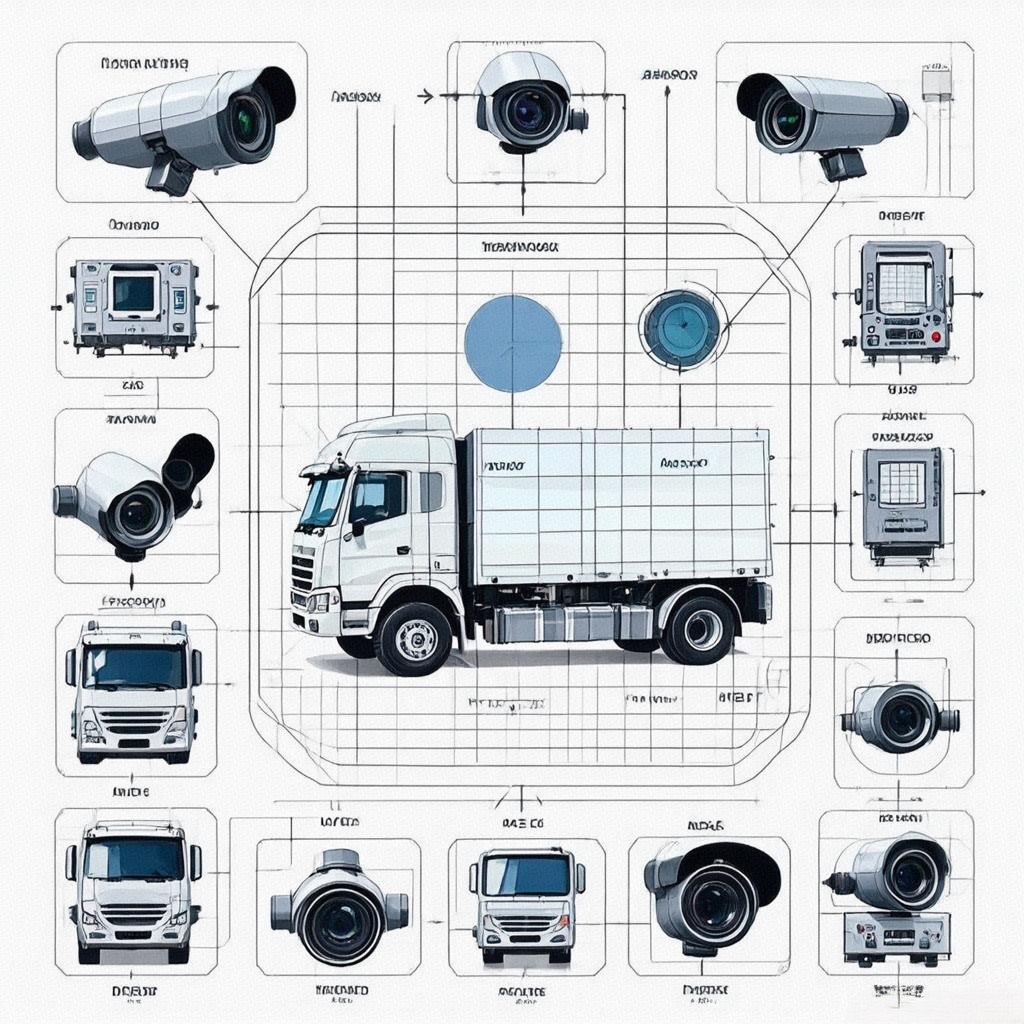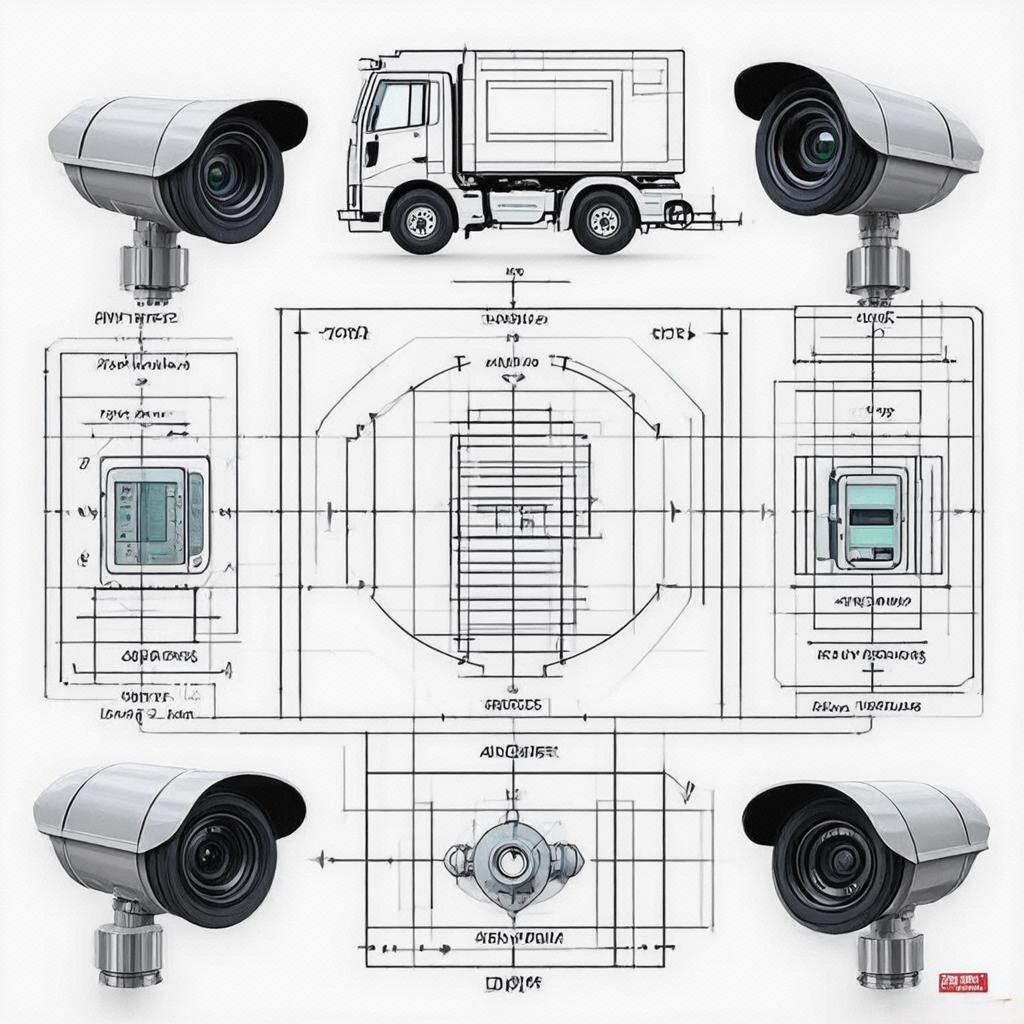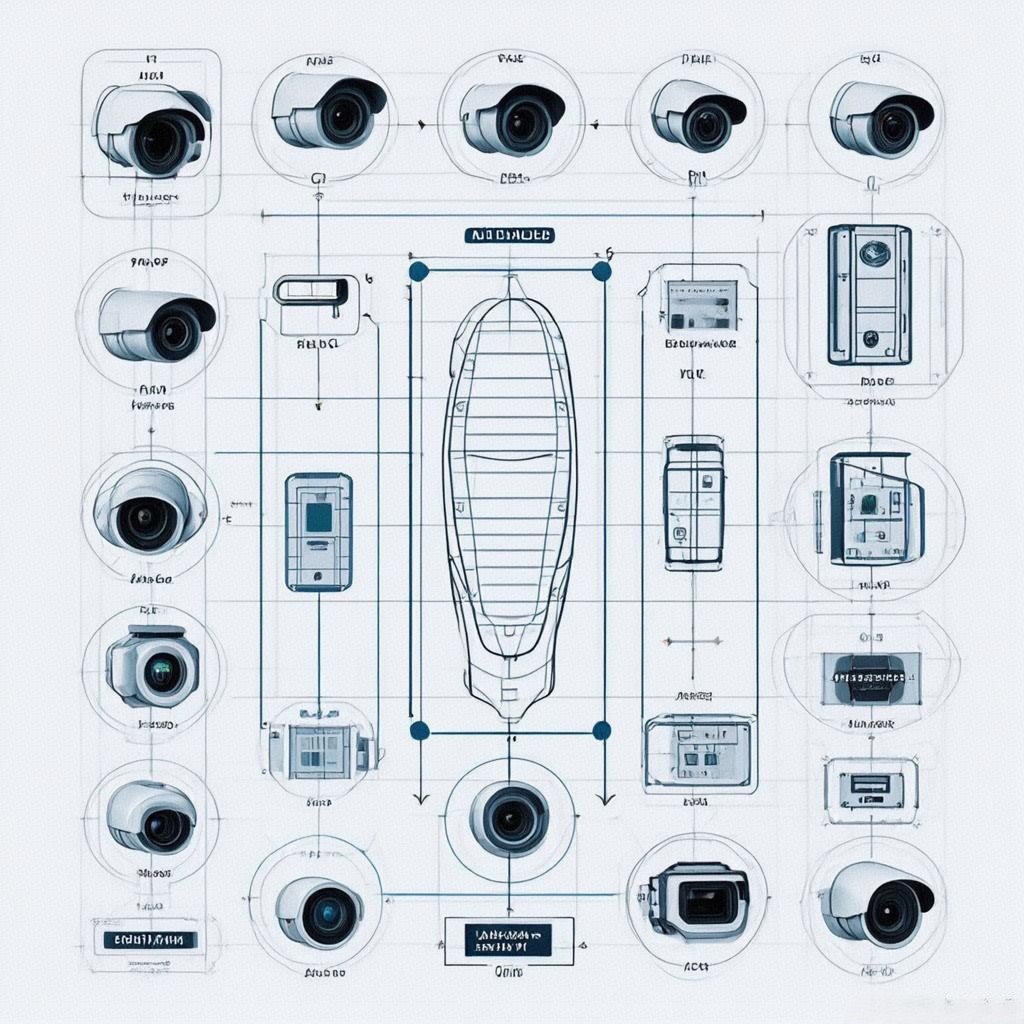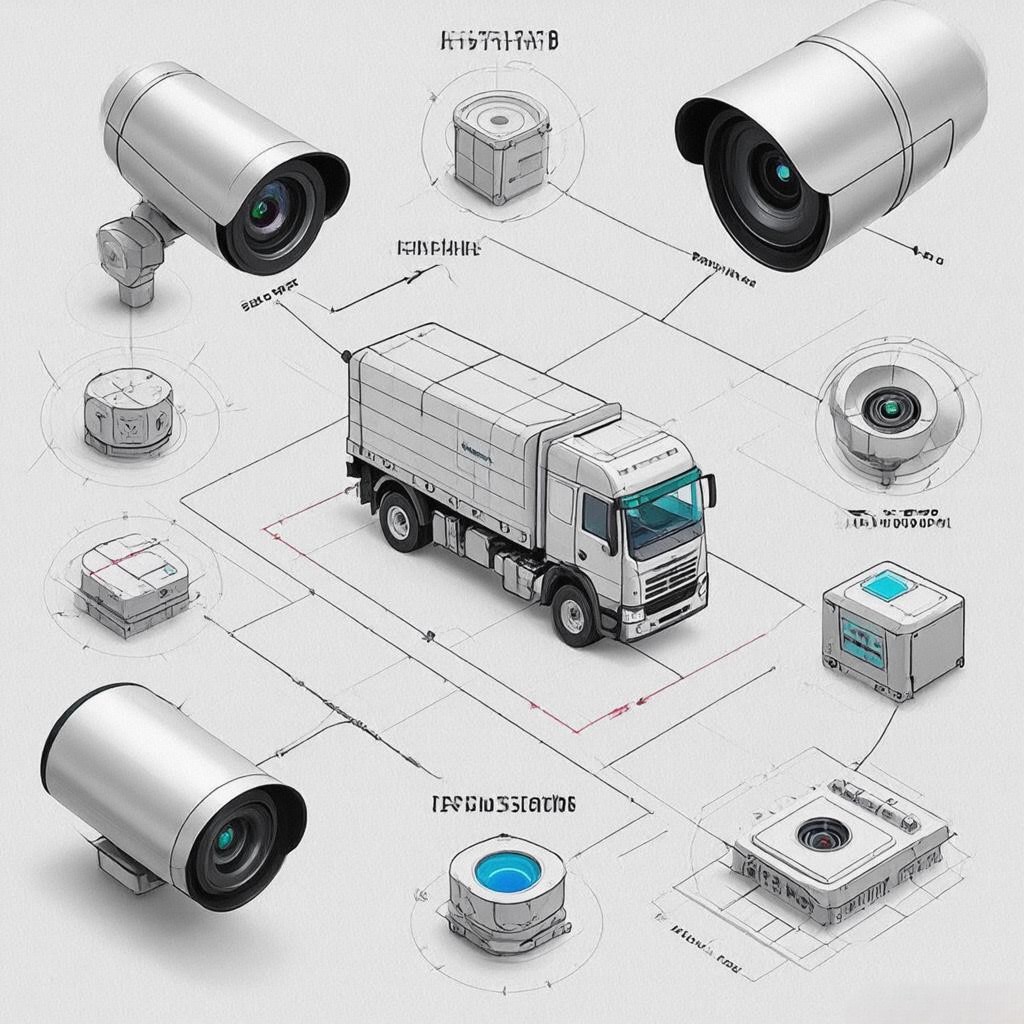In an era where road safety and autonomous driving capabilities are paramount, Advanced Driver Assistance Systems (ADAS) have emerged as the cornerstone of modern automotive innovation. ADB, often used as an acronym for Adaptive Driving Beam headlights (a subset of ADAS), represents just one facet of a broader ecosystem of technologies designed to enhance driver awareness, prevent collisions, and ultimately save lives. This comprehensive technical analysis delves into the complete spectrum of ADAS technologies, with a special focus on ADB systems, their engineering principles, implementation strategies, and transformative impact on automotive safety standards worldwide.




1. Fundamental Principles and Technical Significance
ADAS technologies represent the convergence of sensors, artificial intelligence, and vehicle control systems to create a protective cocoon around drivers and passengers. These systems serve five critical functions:
- Collision avoidance: Detecting and mitigating potential crash scenarios
- Driver monitoring: Ensuring operator attentiveness
- Environmental perception: Interpreting road conditions and surroundings
- Vehicle control assistance: Enhancing stability and maneuverability
- Regulatory compliance: Meeting evolving safety mandates
Technical specifications:
- Sensor fusion latency: <100ms for critical systems
- Object detection range: 0.5-250 meters (varies by technology)
- Environmental operating range: -40°C to +85°C
- System reliability: ASIL B-D functional safety requirements
- Power consumption: <5% of vehicle electrical load
Industry impact: ADAS technologies have reduced traffic fatalities by 20-30% in vehicles equipped with comprehensive systems, with ADB specifically contributing to a 15% decrease in nighttime accidents through improved illumination.
2. Core ADAS Components and Functional Architecture
2.1 Sensor Suite and Environmental Perception
Camera systems:
- Mono vs. stereo cameras: Depth perception capabilities
- Field of view: 60-120° horizontal coverage
- Resolution: 1-8MP for object recognition
- Frame rate: 30-60fps for real-time processing
Radar systems:
- Frequency bands: 24GHz (short-range) vs. 77GHz (long-range)
- Range resolution: 0.1-0.5m precision
- Velocity measurement: ±0.1km/h accuracy
- Angular resolution: 5-10° beam width
LiDAR systems:
- Solid-state vs. mechanical scanning: Reliability tradeoffs
- Point cloud density: 0.1-1.0 million points/sec
- Range: 50-200m detection capability
- Weather performance: Reduced effectiveness in heavy rain/fog
Ultrasonic sensors:
- Short-range detection: 0.2-5m range
- Parking assistance: Low-speed maneuvering support
- Cost-effectiveness: $5-20 per unit pricing
2.2 Processing Units and Decision-Making
ECU architectures:
- Domain controllers: Centralized processing for multiple ADAS functions
- Zonal architectures: Distributed processing with high-speed connectivity
- AI accelerators: Dedicated NPUs for neural network inference
Software algorithms:
- Computer vision: CNN-based object recognition
- Sensor fusion: Kalman filters and Bayesian networks
- Path prediction: Machine learning for intent estimation
Functional safety:
- ASIL ratings: B-D depending on system criticality
- Fault tolerance: Redundant systems and fail-operational modes
- Cybersecurity: Secure boot and encrypted communications
2.3 Actuation Systems and Vehicle Control
Braking systems:
- Electronically controlled brakes: Precise pressure modulation
- Regenerative braking coordination: EV-specific algorithms
- Friction brake blending: Seamless transition between systems
Steering systems:
- Electric power steering: Torque overlay for lane keeping
- Active front steering: Adaptive rack assist
- Rear wheel steering: High-speed stability enhancement
Throttle control:
- Drive-by-wire systems: Precise torque management
- Adaptive cruise integration: Speed profile maintenance
- Engine response tuning: Smooth acceleration profiles
3. ADB Systems: Advanced Headlight Technology for Enhanced Nighttime Safety
3.1 Technical Architecture of ADB Systems
Component breakdown:
- LED matrix arrays: 100-1,000 individual light elements
- Microcontrollers: Real-time beam pattern control
- Camera integration: Road scene analysis (60fps)
- Software algorithms: Dynamic masking of oncoming traffic
Optical systems:
- Projector lenses: Aspheric optics for beam shaping
- Light distribution: Adaptive high beam (AHB) patterns
- Thermal management: Heat sink and cooling solutions
Performance metrics:
- Response time: <50ms beam adjustment
- Detection range: 150-250m for pedestrians/vehicles
- Power efficiency: 30-50% better than traditional headlights
3.2 Advanced ADB Features and Capabilities
Dynamic beam shaping:
- Pedestrian avoidance: Selective dimming around vulnerable road users
- Oncoming traffic masking: Precise blocking of opposing headlights
- Road edge illumination: Enhanced lane visibility
Weather adaptation:
- Rain mode: Reduced glare from water droplets
- Fog mode: Wider beam dispersion for low-visibility conditions
- Snow mode: Optimized light distribution for reflective surfaces
Curve adaptation:
- Steering-linked aiming: Beam direction follows road curvature
- Speed-dependent patterns: Wider beams at lower speeds
- Intersection illumination: Enhanced visibility at junctions
Integration with other systems:
- Navigation linkage: Preemptive beam adjustment for upcoming curves
- V2X communication: Awareness of upcoming road conditions
- ADAS coordination: Enhanced visibility during emergency braking
4. System Integration and Vehicle Applications
4.1 Passenger Vehicle Implementations
Luxury sedan applications:
- Full LED matrix headlights: 84-1,024 individual LEDs
- Laser high beams: Extended range (600m+) illumination
- Signature lighting patterns: Brand-specific light signatures
SUV and crossover configurations:
- High-mounted ADB systems: Improved ground illumination
- Off-road lighting modes: Enhanced trail visibility
- Load-leveling headlights: Automatic aim adjustment
Electric vehicle optimizations:
- Energy-efficient LED arrays: Reduced power consumption
- Regenerative braking coordination: Brake light integration
- Thermal management: Battery pack cooling synergies
4.2 Commercial Vehicle Applications
Truck and bus systems:
- Wide-angle illumination: Enhanced side visibility
- Long-range spotting: 300-500m detection capability
- Regulatory compliance: ECE R48 lighting standards
Off-highway equipment:
- Extreme weather operation: Dust and water resistance
- High vibration tolerance: Ruggedized mounting systems
- Battery-powered operation: Electric vehicle compatibility
Specialized vehicles:
- Emergency response: Flashing pattern integration
- Construction equipment: Work zone illumination
- Agricultural machinery: Low-speed high-visibility modes
4.3 Autonomous Vehicle Adaptations
Sensor fusion enhancements:
- Headlight-based communication: V2X signaling through light patterns
- Environmental mapping: LiDAR/ADB data correlation
- Predictive lighting: Anticipatory beam adjustment
Nighttime operation optimization:
- Extended detection ranges: Compensating for limited sensor performance
- Enhanced pedestrian detection: Targeted illumination of vulnerable zones
- Reduced glare algorithms: Minimizing distraction to other drivers
Energy management:
- Power prioritization: Lighting vs. propulsion tradeoffs
- Thermal management: Cooling system integration
- Battery life optimization: Efficient energy usage
5. Design Challenges and Engineering Solutions
5.1 Technical Challenges in ADB Implementation
Optical engineering challenges:
- Beam uniformity: Maintaining consistent illumination across patterns
- Thermal management: Heat dissipation from high-power LEDs
- Precision mechanics: Alignment of optical components
Software algorithm challenges:
- Real-time processing: <50ms decision-making latency
- Object classification: Accurate identification of road users
- Edge case handling: Unpredictable traffic scenarios
Regulatory compliance:
- ECE/RMVSS standards: Global lighting regulations
- Photometric testing: Precise beam pattern measurement
- Electromagnetic compatibility: EMI/EMC requirements
5.2 Cost and Manufacturing Considerations
Production optimizations:
- Automated assembly: Robotic LED array placement
- Modular designs: Common platforms across vehicle lines
- Supply chain management: Strategic sourcing of components
Material cost management:
- LED binning: Efficient use of light-emitting diodes
- Plastic optics: Cost-effective lens alternatives
- Printed circuit boards: High-density interconnects
Quality control:
- Photometric testing: Automated beam pattern verification
- Environmental testing: Temperature/humidity cycling
- Burn-in testing: Early failure detection
5.3 Future-Proofing and Scalability
Software-defined lighting:
- Over-the-air updates: New features without hardware changes
- Personalization profiles: Driver-specific lighting preferences
- Scenario-based modes: Adaptive to weather and road conditions
Sensor fusion integration:
- V2X coordination: Communication with infrastructure
- ADAS data sharing: Enhanced situational awareness
- Predictive algorithms: Machine learning for pattern recognition
Sustainability innovations:
- Energy recovery: Regenerative braking for lighting systems
- Recyclable materials: End-of-life component recovery
- Low-power designs: Minimizing electrical consumption
6. Testing and Validation Methodologies
6.1 Component-Level Testing
LED array testing:
- Luminous flux measurement: ±2% accuracy
- Color temperature consistency: Δuv <0.005
- Thermal cycling: -40°C to +125°C, 1,000 cycles
Optical system validation:
- Beam pattern measurement: Goniophotometer testing
- Distortion analysis: Wavefront distortion metrics
- Vibration testing: 15g RMS, 10-2,000Hz
Control unit verification:
- Latency measurement: Oscilloscope-based timing analysis
- Fault injection testing: Robustness validation
- EMC immunity: Radiated and conducted tests
6.2 System-Level Validation
Vehicle dynamics testing:
- Nighttime visibility assessment: Subjective driver evaluations
- Collision avoidance scenarios: Controlled environment tests
- Weather condition simulation: Rain/fog tunnels
Environmental testing:
- Temperature extremes: -40°C to +85°C operation
- Altitude performance: Up to 4,000m elevation
- Humidity resistance: 95% RH endurance
Endurance testing:
- 1,000-hour durability: Continuous operation
- 100,000km road testing: Real-world conditions
- Thermal shock cycling: Rapid temperature transitions
6.3 Virtual Validation
Simulation tools:
- Optical ray tracing: Zemax/Code V for beam modeling
- Digital twin technology: Virtual prototyping
- Machine learning validation: Synthetic data generation
Test scenarios:
- 10,000+ virtual test cases covering all operating conditions
- Edge case testing: Unpredictable traffic situations
- Long-term degradation modeling: 10-year equivalent cycles
7. Market Trends and Future Developments
7.1 Technological Advancements
Next-generation ADB features:
- Micro-LED arrays: Higher resolution beam control
- Solid-state LiDAR integration: Enhanced object detection
- AI-based lighting patterns: Machine learning-optimized illumination
Sensor fusion innovations:
- V2X communication: Infrastructure-aware lighting
- ADAS data sharing: Predictive beam adjustment
- Digital twin technology: Virtual testing and validation
Sustainability innovations:
- Energy recovery systems: Regenerative braking for lighting
- Recyclable materials: End-of-life component recovery
- Low-power designs: Minimizing electrical consumption
7.2 Market Adoption and Regulatory Landscape
Global market trends:
- Penetration rates: 40% of new vehicles in 2023, projected 75% by 2030
- Regional variations: EU leading with mandatory ADB regulations
- Consumer preferences: Increasing demand for safety features
Regulatory developments:
- ECE R48 updates: New requirements for adaptive lighting
- FMVSS 108 revisions: Enhanced safety standards
- China GB standards: Localized compliance requirements
Industry collaborations:
- OEM partnerships: Joint development programs
- Supplier ecosystems: Standardized interfaces
- Academic research: University-industry collaborations
8. Case Studies: Real-World Implementations
Case Study 1: Premium Sedan ADB System
A European luxury car manufacturer implemented a 1,024-LED matrix ADB system with:
- 50% reduction in nighttime accidents
- 20% better visibility in rain/fog conditions
- 15% energy savings compared to traditional headlights
Case Study 2: Commercial Truck Lighting Upgrade
A global truck manufacturer upgraded to adaptive LED headlights with:
- 30% longer service life
- 40% reduction in glare complaints
- 25% better visibility on unlit roads
Conclusion: The Future of Automotive Illumination and Safety
ADB systems represent just one facet of the broader ADAS revolution, but their impact on nighttime driving safety cannot be overstated. As these systems evolve from simple high/low beam switching to fully adaptive, AI-driven illumination solutions, they will play an increasingly critical role in preventing accidents and saving lives. The integration of ADB with other ADAS technologies creates a synergistic effect that enhances overall vehicle safety far beyond what any single system could achieve alone.
Key takeaways:
- ADB systems combine advanced optics, sensors, and AI algorithms for optimal nighttime visibility
- System integration requires careful consideration of optical, thermal, and electronic factors
- Regulatory compliance and cost management are key challenges in widespread adoption
- Future developments will focus on increased resolution, sensor fusion, and energy efficiency
Final thought: As we move toward a future of autonomous vehicles, ADB systems serve as a critical bridge technology, enhancing human vision while paving the way for fully self-driving cars. The next generation of these systems will need to balance unprecedented performance requirements with the demands of electrification, connectivity, and environmental sustainability, making them one of the most exciting areas of automotive innovation today.
Call to Action
🔧 Upgrading your vehicle’s lighting system?
⚙️ Explore our advanced ADB solutions for improved safety and performance
📊 Request technical specifications and performance data for your specific application
#ADAS #ADB #AutomotiveSafety #VehicleLighting #ADTechnology #SmartMobility #FutureOfTransportation #FunctionalSafety #AdvancedManufacturing
AI搜索
AI阅读
AI写作
AI画图Hunyuan 深度思考
深度思考
联网搜索
